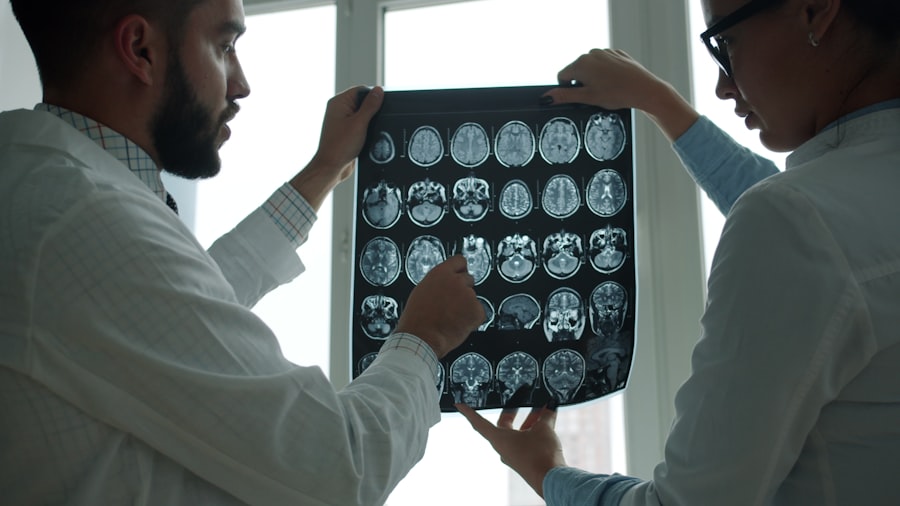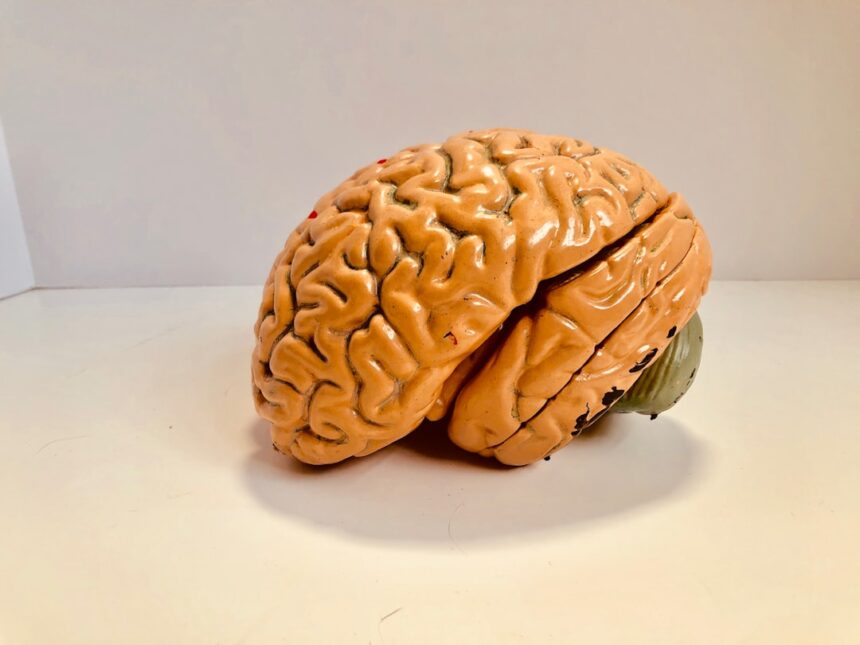To grasp the complexities of trauma, it is essential to delve into the realm of neuroscience. Trauma is not merely an emotional experience; it is a profound event that can alter the very architecture of your brain. Neuroscience provides a framework for understanding how traumatic experiences can lead to significant changes in brain function and structure.
When you experience trauma, your brain processes these events through various neural pathways, which can lead to lasting effects on your mental and emotional well-being. In this context, trauma can be understood as a disruption in the normal functioning of your brain. It can stem from various sources, including physical harm, emotional abuse, or witnessing distressing events.
The impact of these experiences can manifest in numerous ways, affecting your ability to think clearly, regulate emotions, and maintain healthy relationships. By examining trauma through a neuroscientific lens, you can begin to appreciate the intricate interplay between your experiences and the biological processes that govern your responses.
Key Takeaways
- Understanding trauma in the context of neuroscience helps us comprehend the impact of traumatic experiences on the brain and nervous system.
- Trauma can have a significant impact on the brain and nervous system, leading to changes in neural pathways and functioning.
- Neurobiological responses to trauma include heightened stress responses, changes in brain structure, and alterations in neurotransmitter levels.
- The brain demonstrates resilience by adapting to trauma through neuroplasticity, allowing for the possibility of recovery and healing.
- Social support, mindfulness, therapy, and counseling play crucial roles in promoting resilience and healing at the neurobiological level in trauma recovery.
The Impact of Trauma on the Brain and Nervous System
The effects of trauma on your brain and nervous system are profound and multifaceted. When you encounter a traumatic event, your body activates its stress response system, which includes the release of hormones like cortisol and adrenaline. These chemicals prepare you for a fight-or-flight response, but when this system is activated repeatedly due to ongoing trauma, it can lead to dysregulation.
This dysregulation can manifest as anxiety, depression, or other mental health issues that may persist long after the traumatic event has passed. Moreover, trauma can lead to structural changes in your brain. Research has shown that areas such as the hippocampus, which is crucial for memory formation, can shrink in response to chronic stress and trauma.
This shrinkage can impair your ability to process memories and learn new information. Additionally, the amygdala, responsible for processing emotions and fear responses, may become hyperactive, leading to heightened anxiety and emotional reactivity. Understanding these changes can help you recognize the biological underpinnings of your emotional struggles and pave the way for healing.
Neurobiological Responses to Trauma

Your brain’s neurobiological responses to trauma are complex and involve various systems working in tandem. When faced with a traumatic event, your brain’s limbic system—particularly the amygdala—plays a crucial role in detecting threats and triggering emotional responses. This system is responsible for processing fear and can become overly sensitive after experiencing trauma.
As a result, you may find yourself feeling anxious or fearful even in safe situations, as your brain struggles to differentiate between real threats and benign stimuli. Additionally, the prefrontal cortex, which governs rational thought and decision-making, may become less active during traumatic experiences. This reduction in activity can impair your ability to think clearly and make sound judgments when faced with stressors.
The interplay between these brain regions highlights how trauma can disrupt your cognitive processes and emotional regulation. Recognizing these neurobiological responses is vital for understanding why you may react in certain ways following traumatic experiences.
Resilience and the Brain: How the Brain Adapts to Trauma
| Metrics | Data |
|---|---|
| Brain Plasticity | Ability of the brain to reorganize itself and form new neural connections |
| Neurotransmitters | Chemicals that transmit signals between nerve cells in the brain |
| Resilience Factors | Positive relationships, coping skills, and emotional regulation |
| Impact of Trauma | Changes in brain structure and function, increased stress response |
Resilience is a remarkable quality that allows some individuals to bounce back from trauma more effectively than others. Your brain’s ability to adapt in the face of adversity is a testament to its inherent plasticity. When you experience trauma, your brain may undergo changes that enhance your capacity for resilience.
For instance, engaging in positive coping strategies or seeking social support can foster neural connections that promote healing and recovery.
This means that when faced with stressors, you may be better equipped to manage your emotions and adapt your thinking patterns.
By cultivating resilience through practices such as mindfulness or therapy, you can strengthen these neural pathways and enhance your overall well-being.
The Role of Neuroplasticity in Trauma Recovery
Neuroplasticity refers to the brain’s remarkable ability to reorganize itself by forming new neural connections throughout life. This phenomenon plays a crucial role in trauma recovery, as it allows you to reshape your brain’s responses to stress and adversity. When you engage in therapeutic practices or adopt new coping strategies, you stimulate neuroplastic changes that can help mitigate the effects of trauma.
For example, engaging in mindfulness meditation has been shown to promote neuroplasticity by increasing gray matter density in areas of the brain associated with emotional regulation and self-awareness. By incorporating mindfulness into your daily routine, you can create a more resilient neural framework that supports healing from trauma. Understanding neuroplasticity empowers you to take an active role in your recovery journey, knowing that positive changes are possible.
The Importance of Social Support in Healing Trauma

Social support plays a pivotal role in healing from trauma at both psychological and neurobiological levels. When you experience trauma, having a strong support network can buffer against its negative effects. Engaging with friends, family, or support groups provides not only emotional comfort but also physiological benefits.
Research indicates that social connections can reduce cortisol levels and promote feelings of safety and security. Moreover, social interactions stimulate the release of oxytocin, often referred to as the “bonding hormone.” This hormone fosters feelings of trust and connection, which are essential for healing from trauma. By surrounding yourself with supportive individuals who understand your experiences, you create an environment conducive to recovery.
Recognizing the importance of social support encourages you to reach out and build meaningful connections that facilitate healing.
Mindfulness and its Effects on the Brain in Trauma Recovery
Mindfulness practices have gained recognition for their profound effects on mental health and well-being, particularly in the context of trauma recovery. When you engage in mindfulness meditation or other mindfulness-based techniques, you cultivate present-moment awareness and acceptance. This practice can lead to significant changes in brain function and structure, promoting healing from traumatic experiences.
Research has shown that mindfulness can enhance activity in the prefrontal cortex while reducing activity in the amygdala. This shift allows for better emotional regulation and decreased reactivity to stressors. By incorporating mindfulness into your daily routine, you create a space for self-reflection and healing that can counteract the negative effects of trauma on your brain.
The Role of Therapy and Counseling in Healing Trauma at the Neurobiological Level
Therapy and counseling are invaluable tools for healing trauma at a neurobiological level. Various therapeutic approaches—such as cognitive-behavioral therapy (CBT), eye movement desensitization and reprocessing (EMDR), or somatic experiencing—target the underlying neural mechanisms affected by trauma. These therapies help you process traumatic memories, reframe negative thought patterns, and develop healthier coping strategies.
Through therapy, you engage in a collaborative process that fosters neuroplasticity by creating new neural pathways associated with positive experiences and emotions. As you work through your trauma with a trained professional, you gain insights into your thoughts and behaviors while developing skills that promote resilience. This therapeutic journey not only addresses the psychological aspects of trauma but also facilitates healing at a biological level.
The Intersection of Genetics and Neurobiology in Trauma and Resilience
The interplay between genetics and neurobiology significantly influences how individuals respond to trauma and develop resilience. Your genetic makeup can predispose you to certain reactions when faced with stressors or traumatic events. For instance, variations in genes related to neurotransmitter systems may affect how your brain processes emotions or regulates stress responses.
Understanding this intersection allows you to appreciate that resilience is not solely a product of environmental factors; it is also shaped by biological predispositions. While genetics may play a role in vulnerability to trauma, it is essential to recognize that environmental influences—such as supportive relationships or positive coping strategies—can mitigate these effects. By acknowledging both genetic and environmental factors, you empower yourself to take proactive steps toward healing.
The Long-Term Effects of Trauma on the Brain and Nervous System
The long-term effects of trauma on your brain and nervous system can be profound and enduring. Chronic exposure to stress hormones can lead to alterations in brain structure and function that persist long after the traumatic event has passed.
These long-term effects can manifest as various mental health challenges, including post-traumatic stress disorder (PTSD), anxiety disorders, or depression. Understanding these potential outcomes underscores the importance of seeking help if you have experienced trauma. By addressing these issues early on, you can work toward mitigating their impact on your life.
Strategies for Promoting Resilience and Healing at the Neurobiological Level
Promoting resilience and healing at the neurobiological level involves adopting various strategies that support both mental health and brain function. Engaging in regular physical activity has been shown to enhance neuroplasticity while reducing symptoms of anxiety and depression. Exercise stimulates the release of endorphins—natural mood lifters—and promotes overall well-being.
Incorporating mindfulness practices into your daily routine is another effective strategy for fostering resilience. Mindfulness not only enhances emotional regulation but also promotes self-awareness and acceptance of difficult emotions. Additionally, seeking social support from friends or support groups can provide a sense of belonging that is crucial for healing.
By combining these strategies with professional therapy or counseling, you create a comprehensive approach to healing from trauma at both psychological and neurobiological levels. Embracing this multifaceted approach empowers you to take charge of your recovery journey while fostering resilience for future challenges.
In recent years, the neuroscience of trauma and resilience has gained significant attention, shedding light on how the brain processes traumatic experiences and the mechanisms that foster resilience. An insightful article on this topic can be found on Unplugged Psych, which delves into the intricate interplay between neural pathways and psychological resilience. This piece explores how certain brain structures and functions are altered by trauma and how they can be harnessed to build resilience. For a deeper understanding, you can read more about it on their website.
🧠 Your Trauma Is Rewiring Your Brain: Here’s How to Undo It | A Neuroplasticity & Somatic Guide
FAQs
What is the neuroscience of trauma and resilience?
The neuroscience of trauma and resilience refers to the study of how the brain and nervous system respond to traumatic experiences, as well as the mechanisms that contribute to resilience in the face of adversity.
How does trauma affect the brain?
Trauma can have a significant impact on the brain, particularly the areas involved in emotional regulation, memory, and stress response. It can lead to changes in the structure and function of the brain, affecting an individual’s ability to cope with stress and regulate emotions.
What are the neural mechanisms of resilience?
Neural mechanisms of resilience involve the brain’s ability to adapt and recover from traumatic experiences. This may include the activation of certain brain regions involved in emotional regulation, cognitive flexibility, and social support, as well as the release of stress-buffering neurochemicals.
Can the brain recover from trauma?
The brain has the capacity to recover from trauma through a process known as neuroplasticity, which allows for the reorganization and rewiring of neural pathways. With appropriate support and interventions, individuals can experience healing and recovery from the effects of trauma.
What are some strategies for promoting resilience in the face of trauma?
Strategies for promoting resilience may include fostering social connections, engaging in mindfulness and relaxation techniques, seeking professional support, and engaging in activities that promote a sense of mastery and empowerment. These strategies can help individuals build resilience and cope with the effects of trauma.




